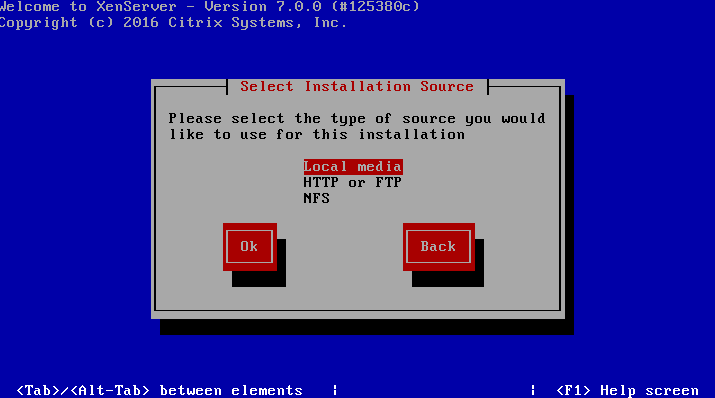

The read bandwidth of the device in kilo bytes per second. Indicates the transmit errors per second on this virtual interface.Įrrors received per second on this virtual interface. Indicates whether the device is attached.ĭata transmitted on virtual interface in kilo bytes per second.ĭata received on virtual interface in kilo bytes per second. Maximum transmission units of the virtual network interface in octets. The name of the virtual network to which this virtual network interface is connected.
Xenserver install monit mac#
The metrics in this category contain the VM network utilization details.Įthernet MAC address of virtual interface, as exposed to guest.


The name of the storage repository where the virtual disk image is located. Indicates whether this disk can be shared. Indicates whether this disk can be mounted only as read-only. The physical utilization of this virtual disk image in GB.ĭisplays the size of the disk as presented to the guest in GB. Indicates whether the virtual disk image is present on disk. Indicates whether the virtual disk image is a managed disk image. The description of the virtual disk image.ĭisplays the location information of the virtual disk image. Indicates whether this virtual block device supports hot-unplug. Indicates how the virtual block device appears to the guest. Indicates whether a storage level lock was acquired.
Xenserver install monit code#
The mode the virtual block device must be mounted with.Įrror/success code that is associated with last attach-operation. Indicates whether this device is an empty drive. Indicates whether the device is attached or not. Indicates whether this virtual block device is bootable. Specifies the maximum amount of static memory allocated to the virtual machine. Specifies the minimum amount of static memory allocated to the virtual machine. The maximum dynamic allocation of memory to a VM from a pool of memory on the host. The minimum dynamic allocation of memory to a VM from a pool of memory on the host. The maximum memory which is allocated to the virtual machine. This tab shows metrics about the memory utilization of the virtual machineĪmount of additional host memory allocated to the virtual machine in MB. Shows the current status of the VM - available or not available. Specifies the time at which the next poll is scheduled. Specifies the time at which the last poll was performed. This tab provides a high-level overview of the virtual machine as well as its resource utilization.ĭenotes the health (Clear, Warning, Critical) status of the VM. Below is an explanation of the metrics shown in these tabs: These metrics are categorized into 6 separate tabs for easy understanding. This section enables you to find out which virtual machines are consuming your server resources and take action accordingly.Ĭlick on the individual monitors listed in the Availability tab to view detailed performance metrics of the corresponding virtual machine.

The Top Virtual Machines tab shows graphs for the top CPU consumers, top memory consumers, top disk I/O consumers, and top network consumers of the XenServer. Click on the individual virtual machines listed to view detailed VM metrics. The list view also enables you to perform bulkĪdmin configurations. This view provides an overall idea of the availability and health of all the virtual machines. The List view displays all the virtual machines discovered under each XenServer. This tab also shows the health status and events for the The Performance tab shows some key performance indicators of the virtual machine including CPU Utilization, Memory Utilization, Disk I/O Utilization and Network Utilization along with heat charts for these attributes. You can also view Availability history of the virtual machines for the past 24 hours The Availability tab lists all the virtual machines present in the XenServers and their availability status.
Xenserver install monit manual#
This automation capability helps IT teams significantly reduce manual intervention and ensure their business-critical applications running in Citrix environments do not experience resource shortage. For example, Applications Manager can automatically start/stop/restart VMs in a XenServer farm when the number of active sessions in a Tomcat server or Oracle application server exceeds the specified threshold limit. at the VM level.Īpplications Manager also enables IT administrators to automate the provisioning of XenServer VMs based on threshold breaches. The solution also tracks attributes related to processes, guest OS, event log, etc. The key performance metrics monitored by Applications Manager include those pertaining to CPU usage, memory usage, storage details, network utilization and configuration info at both the XenServer host and VM level. Applications Manager - Citrix XenServer Monitoring,Manage Availability and Health of XenServer Virtual Machines


 0 kommentar(er)
0 kommentar(er)
